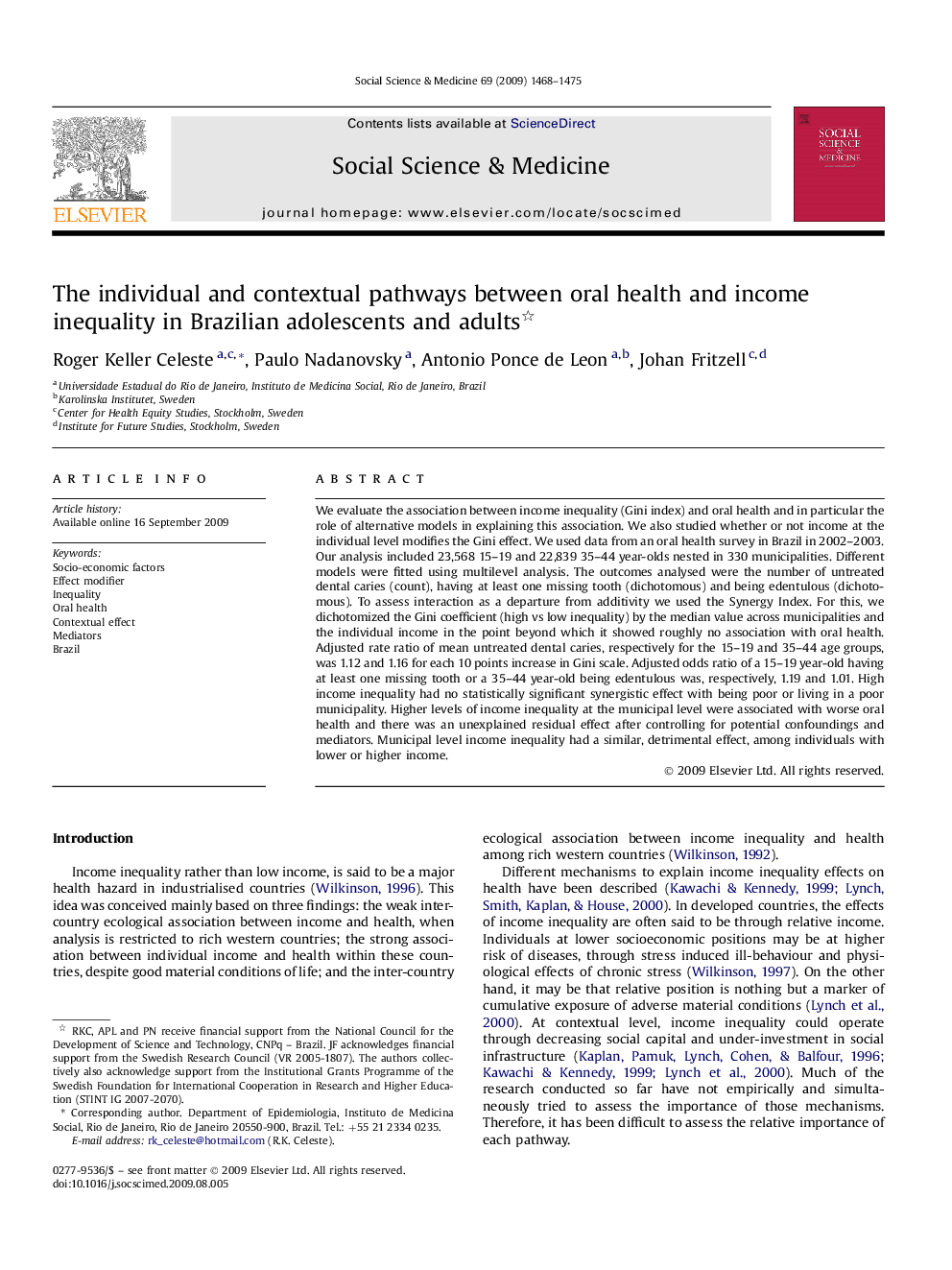| Article ID | Journal | Published Year | Pages | File Type |
|---|---|---|---|---|
| 953211 | Social Science & Medicine | 2009 | 8 Pages |
We evaluate the association between income inequality (Gini index) and oral health and in particular the role of alternative models in explaining this association. We also studied whether or not income at the individual level modifies the Gini effect. We used data from an oral health survey in Brazil in 2002–2003. Our analysis included 23,568 15–19 and 22,839 35–44 year-olds nested in 330 municipalities. Different models were fitted using multilevel analysis. The outcomes analysed were the number of untreated dental caries (count), having at least one missing tooth (dichotomous) and being edentulous (dichotomous). To assess interaction as a departure from additivity we used the Synergy Index. For this, we dichotomized the Gini coefficient (high vs low inequality) by the median value across municipalities and the individual income in the point beyond which it showed roughly no association with oral health. Adjusted rate ratio of mean untreated dental caries, respectively for the 15–19 and 35–44 age groups, was 1.12 and 1.16 for each 10 points increase in Gini scale. Adjusted odds ratio of a 15–19 year-old having at least one missing tooth or a 35–44 year-old being edentulous was, respectively, 1.19 and 1.01. High income inequality had no statistically significant synergistic effect with being poor or living in a poor municipality. Higher levels of income inequality at the municipal level were associated with worse oral health and there was an unexplained residual effect after controlling for potential confoundings and mediators. Municipal level income inequality had a similar, detrimental effect, among individuals with lower or higher income.
